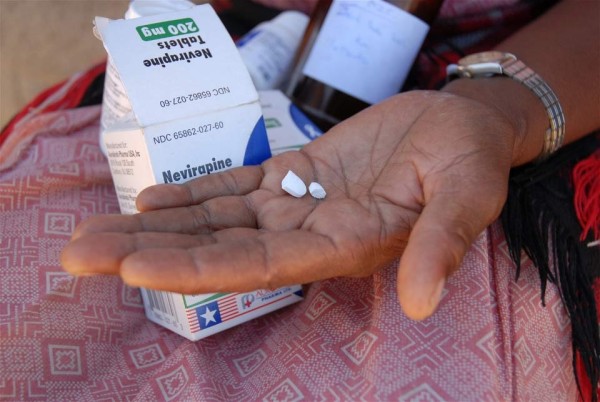New HIV infections among children have been reduced by 50 per cent or more in seven countries in sub-Saharan Africa, the United Nations agency spearheading the global AIDS response said today.
Botswana, Ethiopia, Ghana, Malawi, Namibia, South Africa, and Zambia have reduced new HIV infections among children by half since 2009, while Tanzania and Zimbabwe are also making substantial progress.
This is according to the latest progress report on the Global Plan towards the elimination of new HIV infections among children by 2015 and keeping their mothers alive (Global Plan), which was launched in July 2011 at the UN General Assembly High-level Meeting on AIDS.
The Plan has two main targets for 2015: a 90 per cent reduction in the number of children newly infected with HIV and a 50 per cent reduction in the number of AIDS-related maternal deaths.
It focuses on the 22 countries which account for 90 per cent of new HIV infections among children. The current report presents the progress made by the 21 countries in sub-Saharan Africa and some of the challenges they face in meeting the agreed targets for 2015. Data from India was not available at the time the report was written
Overall, the report shows that there were 130,000 fewer new HIV infections among children across the 21 countries in sub-Saharan Africa – a drop of 38 per cent since 2009.
“The progress in the majority of countries is a strong signal that with focused efforts, every child can be born free from HIV,” said Michel Sidibé, Executive Director of the Joint UN Programme on HIV/AIDS (UNAIDS), which spearheaded the Global Plan initiative along with the United States President’s Emergency Plan for AIDS Relief (PEPFAR).
“But progress has stalled in some countries with high numbers of new HIV infections. We need to find out why and remove the bottlenecks which are preventing scale-up,” he added.
UNAIDS noted in a news release that Ghana showed the greatest decline in the rate of new infections among children since 2009 (76 per cent), followed by South Africa (63 per cent).
However, the pace of decline in some of the Global Plan priority countries has been slow and in Angola, new HIV infections have even increased.
New infections among children in Nigeria, which has the largest number of children acquiring HIV (nearly 60,000 new HIV infections among children in 2012), remained largely unchanged since 2009. Without urgent action in Nigeria, the global target for 2015 may not be reached, the report warns.
The report also notes that more pregnant women living with HIV were receiving antiretroviral medicines to prevent HIV from being transmitted to their children and for their own health in 2012 than in 2009, with coverage levels exceeding 75 per cent in many countries.
Increased coverage has reduced HIV transmission rates from mother to child in most countries. Botswana and South Africa have reduced transmission rates to 5 per cent or below.
“We have the tools required to reach the Global Plan’s goals, and recent data show that we are moving ever closer to their realization,” said Ambassador Eric P. Goosby, US Global AIDS Coordinator.
“This month, as US Secretary of State John Kerry announced, the one millionth baby will be born HIV-free due to PEPFAR’s support. Now, we must all continue working together to see the day when no children are born with HIV, which is within our reach,” he added.
At the same time, the report also shows that only half of all breastfeeding women living with HIV or their children receive antiretroviral medicines to prevent transmission of HIV. It outlines that breastfeeding is critical to ensuring child survival and strongly emphasizes the urgent need to provide antiretroviral therapy during the breastfeeding period.
More than half of the children eligible for treatment in South Africa and Swaziland now have access. Chad, Ethiopia, Ghana, Kenya, Malawi, Nigeria, South Africa, Tanzania, and Zimbabwe have doubled the numbers of children accessing treatment from 2009 to 2012.
While the report outlines that the number of children requiring HIV treatment will reduce as new HIV infections decline, urgent steps need to be taken to improve early diagnosis of HIV in children and ensure timely access to antiretroviral treatment.
Also, the number of pregnant women living with HIV receiving antiretroviral therapy for their own health has increased since 2009, the report adds. In Botswana, Ghana, Malawi, Namibia, South Africa, Swaziland, and Zambia, more than 75 per cent of the pregnant women eligible receive antiretroviral therapy and more than 50 per cent in Kenya, Lesotho, Tanzania, and Zimbabwe.
The original article can be found on the UN News Centre website, here.










